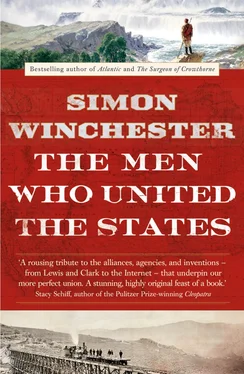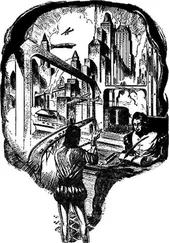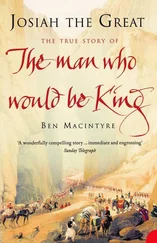1 ...6 7 8 10 11 12 ...26 Now, ten years on, Lewis was being asked to go. And to go, moreover, as the expedition leader—Jefferson being by now fully familiar with his assistant’s practical abilities as a trapper and hunter, a man who could travel far away in extreme discomfort and not come whining home. The president also admired him for being an exceptionally quick study—his “luminous and discriminating intellect” being one of the many reasons that prompted Jefferson to employ Lewis at the White House in March 1801.
Another reason Jefferson decided to order him out west was Lewis’s unusually sympathetic awareness of America’s aboriginal people. Lewis already had firsthand knowledge of various Indian tribes: the Cherokee in Georgia, where he had lived as a young man; the Chickasaw and the Shawnee when he was stationed as a soldier near modern-day Memphis; the Miami when he was involved in the mighty Battle of Fallen Timbers in far western Ohio; and later the Potawatomi near his army camp in lands close to today’s Detroit.
At the time of Jefferson’s pouting decision, the Louisiana Purchase had not yet been consummated. The drapeau tricolore still flew on the far side of the Mississippi. There was also evidence that maybe Britain was about to make some kind of claim on the territory too, leading to a certain urgency. Lewis had to leave, it was decided, and in double-quick time.
The depth of ignorance of the soon-to-be-acquired territory was profound. Its precise borders were unknown, for a start—and the French had made it abundantly clear they were not going to give Americans any information about them. Lewis and the party he would choose would have to start essentially from scratch. Where were the land’s natural frontiers, where were the mountain ranges, and how exactly did its rivers twist and turn down from the hilltops to the sea? They would have to find out. Moreover, were there truly, as stories of the time suggested, great peaks out in the vastness that were made entirely out of salt? Where were the territory’s snowfields, its deserts, the pastures and the prairies? What kinds of flowers and trees grew there, and what species of animals, which types of birds?
And who exactly were the peoples—the Indians, as Columbus had supposed—who had belonged to the land before? Was it true, as some said, that many of them were Welsh? Or, according to others, the Lost Tribes of Israel? And whoever they might be, where did they now live and have their being?
By March 1803 the necessary congressional authorization for the venture was in hand. A sum of $2,500 was appropriated—with $696 set aside for gifts to the natives. A month later and the transfer papers were formally signed in Paris, and the land that had so intrigued Jefferson was now fully American owned and so could be legally explored.
Lewis, now certain the expedition was to begin, procured a note of limitless credit signed by President Jefferson himself as a guarantee, just in case they ran out of cash. He then began assembling his gear. He found his rifles at an army arsenal in Virginia. He found builders for an iron-framed fifty-five-foot wooden keelboat in Pittsburgh. He found his ammunition, his trinket gifts, and his comestibles in Philadelphia. He had to imagine what else he might need: mosquito nets, waterproof lead tubes for holding ammunition, various bibelots and silver medallions struck with Jefferson’s profile to be handed out as marks of amity to the encountered Indians, large quantities of powdered ink, 193 pounds of dried soup, twenty-five axes, and four gross of fishhooks. He also took instruction in field medicine—mainly from a doctor of somewhat crabbed views who believed most ailments could be cured by powerful laxatives, especially one made of mercuric chloride and a ground-up Mexican purgative root named jalap.
With the gear assembled, it was now time to gather the men. In June, shortly before the secretary of war gave formal authorization on July 2 for the corps to select volunteers for the expedition from any of his army garrisons along the Ohio, Lewis wrote to his old army friend William Clark, offering him the position of joint leader of the expedition. The latter accepted cheerfully: “This is an undertaking fraighted with many difeculties, but My friend I do assure you that no man lives whith whome I would prefur to undertake Such a Trip.”
Clark was four years older and, in their previous encounter, had been the senior officer. Clark was more rough-hewn and both less literate and by all accounts less given to dark moods than Lewis. Clark had been tested in battle with Indians, while Lewis had not. And Lewis was very much Jefferson’s protégé, while Clark had barely a nodding acquaintance with the president. Nevertheless, the pair—who joined up in the Ohio River town of Clarksville, Indiana, in October to begin their formal collaboration—got on famously well on just about every day of the 856 they would spend away together.
In Clarksville they assembled their full team, the soldiers chosen from the scores of fort-weary volunteers ready for an opportunity of real excitement. In the end some twenty-nine men, including Clark’s slave, York, were sworn in for the duties ahead.
There were ten weeks of training and preparation before the team was prepared to start. History records with some precision the formal beginning of the expedition: three thirty in the afternoon of Monday, May 21, 1804.
By now the winter was well over; the ice was gone, and the rivers were brimming with snowmelt. Having crossed the Mississippi separately, Lewis rejoined Clark some slight way along its principal tributary, the Missouri. The place he chose was the village of Saint Charles, a threadbare settlement on the river’s north bank with a population of about four hundred, most of them French Canadians.
There was a simple topographic reason for the choice of the expedition’s starting point. Close to the junction of the two streams, there was a mess of fluvial indecision, with the tributary rivers swiveling direction at the behest of their conjoined currents, leaving a maze of swamps and oxbow lakes and blind-alley bays all across the landscape. But in Saint Charles, the Missouri seemed at last to start pulling itself firmly away to the west—the direction in which the expedition wanted to go.
The river’s course was directed by the local geology—the same geology that also enticed the first settlers. There was a low bluff of Devonian sandstone hills on the river’s northern bank, the first elevated ground west of its junction with the Mississippi, which would both keep any settlers safe from floods and, in case of attack, offer their pickets a good view of the waters downstream. So a cluster of buildings was built along the bluff—a Catholic chapel, a hundred poorly made houses, a few shops. All of them looked southward across the deep brown stream—the Big Muddy, as it would later be widely called (Clark claimed to find a wineglassful of ooze in every pint of Missouri river water)—toward the scattering of houses in distant Saint Louis, toward the familiar and the known.
Behind, beyond their village pale, was the true unknown—a terra incognita of brown Indian hills, expanses of lands unfamiliar and potentially hostile. Hunters and trappers ventured there—but no settlers, not yet. Saint Charles was thus for many years the most westerly European settlement, the last bastion of immigrant civilization, a town that lay at the very point of intersection between settled America and untamed native lands of the frontier. It could scarcely have been more appropriate as a departure point.
A thunderstorm was raging when Lewis arrived from Saint Louis. He took what churchly men still charmingly called a cold collation—a snack, allowed on fast days—and then crossed the river, where he found Lieutenant Clark and his party encamped for the evening. Most of the party (except for one member, who the night before had received fifty lashes for going AWOL and then displaying “behavior unbecoming” at a party) were “in good health and sperits.” Small wonder: Clark had been royally looked after during his four-day stay: the local Gallic swells offered far better food and wine than had ever been available back east, together with invitations to balls and visits to his boats by numbers of ladies of the town.
Читать дальше












